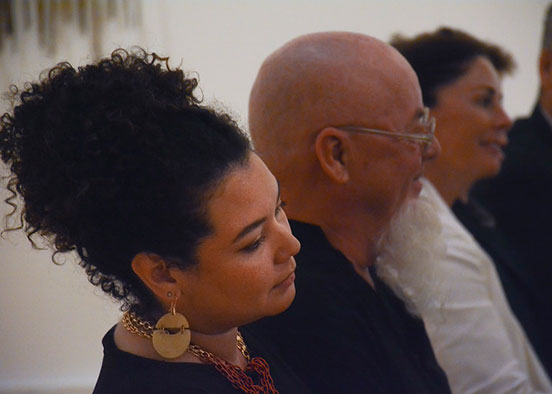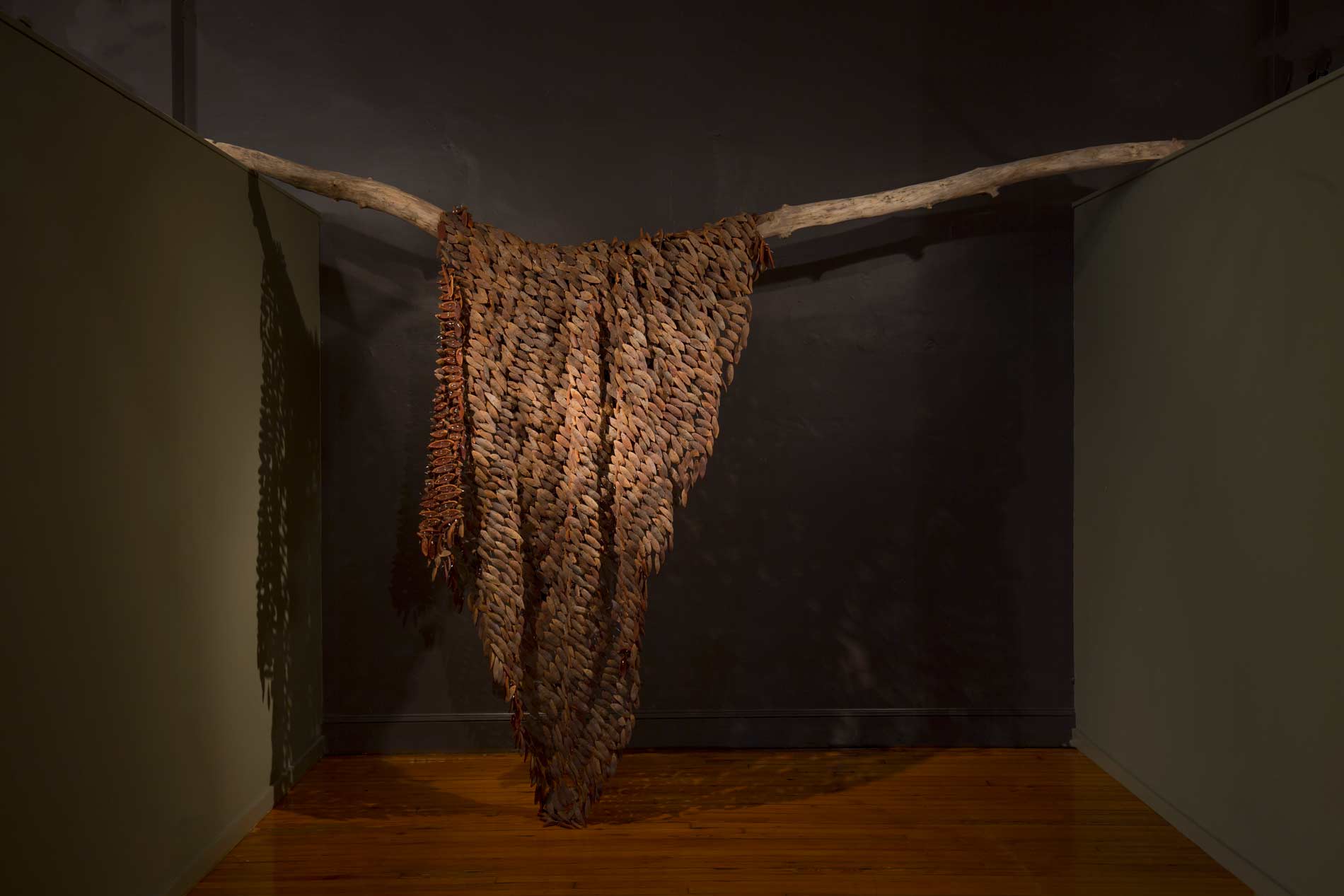
Presence: Ran Adler
Wasmer Art Gallery
January 30 - February 27, 2020
Opening Reception, Artist Talk and Performance by the Jazz Combo- Thursday, January 30, 5 -7pm
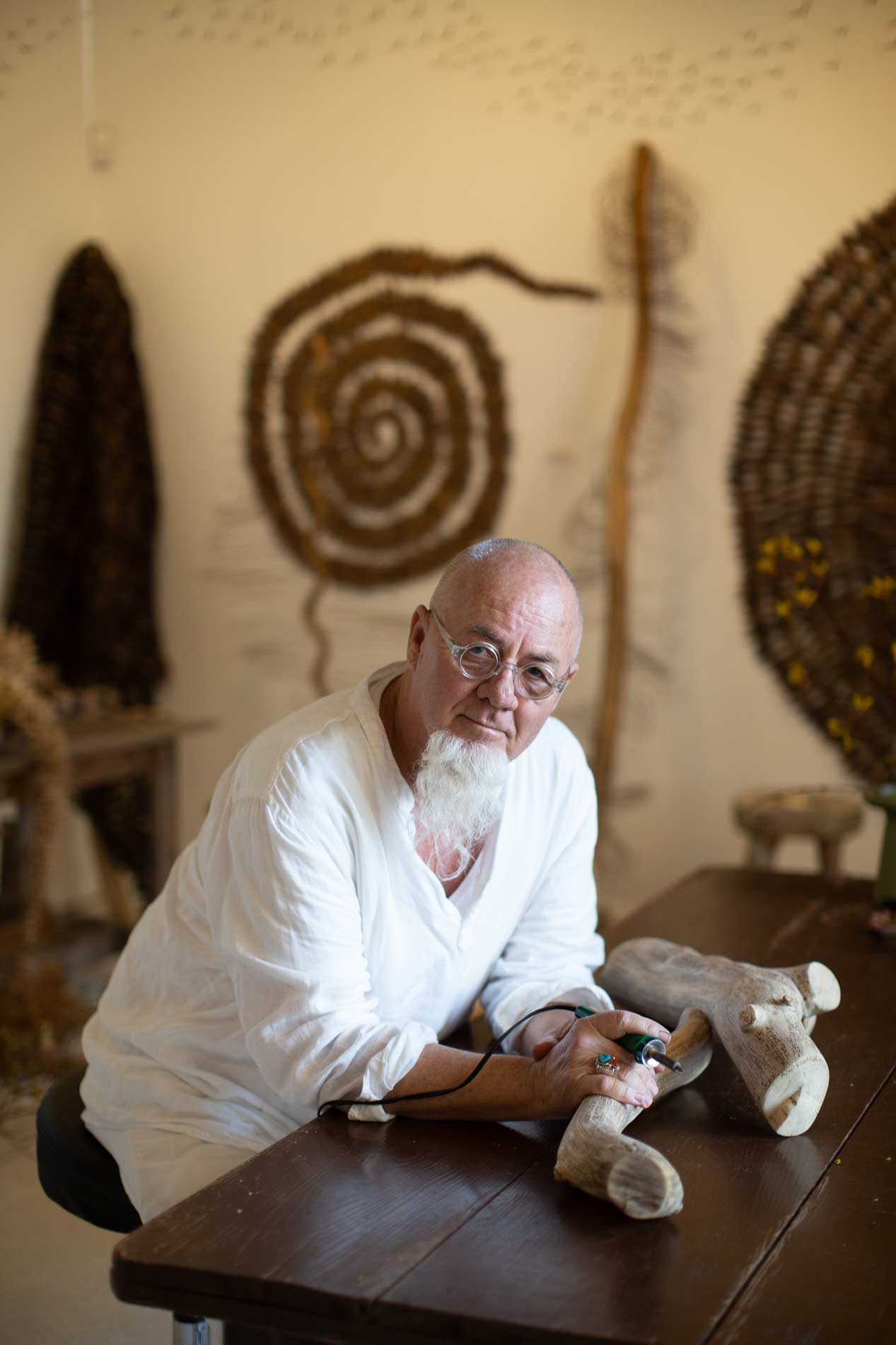
THE ARTIST - RAN ADLER
Ran Adler is a self taught artist of assemblage. Over a lifetime of working in many creative fields, inspired and instructed by nature, he found himself in a practice of creating with little or no instruction. Using various elements of nature as his medium, each is united by the common characteristic of having grown around us. Through these components he utilizes intense wiring, weaving and stringing techniques.
The harmonious transformation of chaos into ordered systems results from the meditative process of Ran Adler. The often repetitive and rhythmic movements of threading, inscribing and assembling become a meditative or prayer like state of mind from which remediation of external forces is understood and expressed in the work.
Currently represented by Judith Liegeois Designs in Naples, Gardner Colby Gallery in Naples and Blackman Cruz in Los Angeles. Adler has exhibited widely in the United States in solo and group exhibitions. He is the artist in residence at Judith Liegeois in Naples and the guest artist at Florida Gulf Coast University.
This exhibition is sponsored by The Wasmer Family, Judith Liegeois Designs, Alice and Dean Fjelstul, Gene and Lee Seidler, the State of Florida, Department of State, Division of Cultural Affairs and the Florida Council on Arts and Culture and WGCU Public Media
Image credits: Artist Ran Adler in his studio. Photo courtesy of Owen Collective; Ran Adler, Art of Assemblage (detail), 2015-16, Wire, mahogany pods and driftwood, Dimensions variable. Photo by Steve Scott
THE EXHIBITION
Each year the FGCU Art Galleries curates an exhibition with the goal of not only exhibiting the work of an outstanding artist, but of also connecting the artist to the region of Southwest Florida in a unique way. This year’s artist, Ran Adler, comes to us with an established and deep connection to the natural environment of our area. Working in close proximity to campus from his studio in Naples, Florida, provides the artist with an opportunity to engage inventive collaborations across multiple disciplines of FGCU.
The Wasmer Art Gallery’s high ceiling inspired Adler to think of his work in a grand scale and to contemplate how his work might inspire others to engage public spaces. With this ambition in mind, Adler took on FGCU Art Major and Gallery Assistant, Marcela Pulgarin, to assist him in maintaining his notable attention to detail in the production of his art. Pulgarin has devoted herself this fall semester to countless hours learning Adler’s craft to help produce his work. Arts Writer Tom Hall agreed to write about Adler’s new body of work and inspired us all with his thoughtful perspective on the role of public art.
The Bower School of Music & the Arts provides an incredible opportunity to cross pollinate ideas between art forms. For this exhibition Ran Adler invited Brandon Robertson, Bower School of Music faculty, and the FGCU Jazz Combo to his studio to see the works in progress and to discuss how musicians could interpret the work. This visit resulted in new compositions to be performed as a concert in the Wasmer Art Gallery. FGCU Theatre faculty Dan Bacalzo developed his course, “Creating New Theatre,” to integrate the exhibition into his students’ creative process. They developed original theatre pieces to be performed within Adler’s installation.
Judith Liegeois Designs opened their doors to support all of these efforts and the Wasmer Family stepped forward to support the exhibition and fund the acquisition of one of Adler’s works for the FGCU Permanent Collection.
All of these generous contributions are a testimony to Southwest Florida’s support of the FGCU Art Galleries’ mission and to the quality of work Adler produces. Thank you all for contributing to the cultural richness of Southwest Florida.
~ John Loscuito, Director Florida Gulf Coast University Art Galleries
ART IN PUBLIC PLACES
written by TOM HALL
Ran Adler’s large-scale assemblages exert an unmistakable Presence on any space they occupy. Rough, raw and random, they serve as needed reminders of the staggering unpredictability and humbling power of nature lurking just outside. The horsetail reed, thorn and seedpod constructs shape the space, opening the mind not only to the fragility if not futility of our efforts to control our physical environment, but to our overarching responsibility as stewards of the planet.
Regardless of the message, the function of art in public places is to stimulate thought, conversation and activity. Public art is not merely decorative. It is the handmaiden of both architecture and interior design, creating an indelible imprint that ties the space in which it has been installed to its underlying history, use or present associations.
In an August, 2018 green paper, the Americans for the Arts noted that art in public spaces also (1) contributes to a community’s economic growth and sustainability; (2) provides citizens and visitors with drivers of attachment; (3) validates the importance of artists and other creatives; (4) reinforces social connectivity by highlighting other cultures and perspectives; and (5) promotes wellness and enhances quality of life by providing a sense of belonging and engendering a stronger sense of community.
Since the Great Depression, government has fulfilled the central role in commissioning, installing and maintaining public artworks. Most federal, state and local programs utilize a percent-for-art funding mechanism. But while these government-sponsored public art programs strive to advance the benefits derived by the public from interacting and connecting with artistic landmarks, they suffer from several significant infirmities. For example, they limit the location and type of artworks displayed, and because they are keyed to new construction and substantial renovations of existing properties, the money they provide is uncertain and uneven, rendering long-term planning all but impossible. Finally, the continued viability of these programs is subject to political whim and caprice, particularly during recessionary times.
As a consequence, a new paradigm is needed to ensure that public art continues to thrive. Private developers, public and closely-held corporations and individual benefactors need to play a bigger role in creative placemaking.
While many percent for art laws require private developers to participate, most do not. Yet, developers and associated property owners glean numerous advantages from including public art in their projects including, anecdotally, better environments for tenants and employees and higher rents and asking prices for residential and commercial properties. The Riviera-St. Tropez condominium complex along the Caloosahatchee River on Palm Beach Boulevard is a case in point. Although not obligated to do so by Fort Myers’ public art ordinance, its developer nevertheless commissioned an entryway sculpture by renowned monumental metal sculptor Albert Paley. Today, Naiad not only serves as a brand for the complex, it ties the property and community to Paley works located on the FGCU campus as well as at the Baker Museum of Art and Artis Naples.
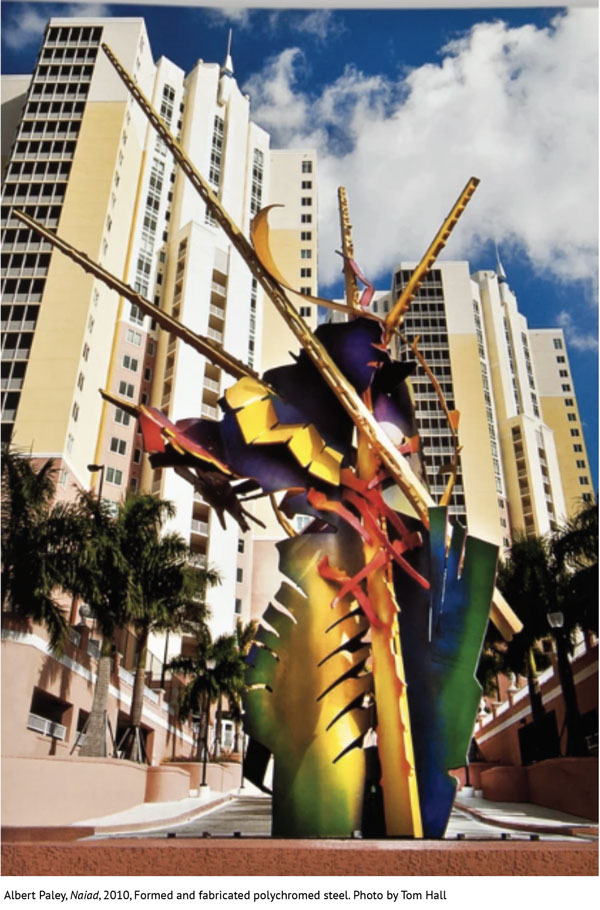
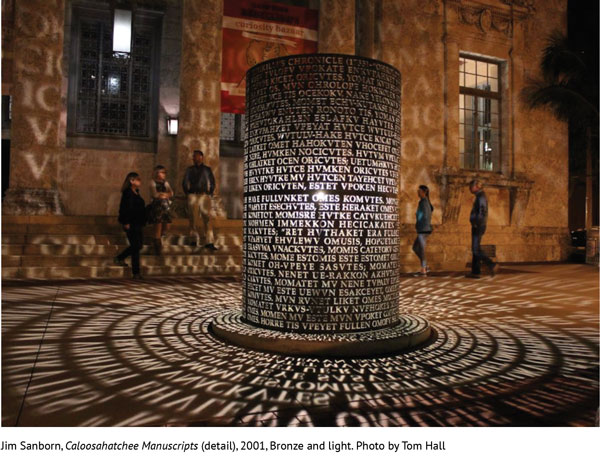
Finally, there’s Ran Adler’s organic assemblage Waterspout. Philanthropist and Board President Rosemary Wick brought the piece to the Marco Island Center for the Arts after seeing Adler’s work in a solo show in her former hometown of St. Louis. Dominating the main lobby, Waterspout captivates patrons from the instant they walk through the Art Center’s front doors, conveying the subliminal message that one can find dynamic, noteworthy and uplifting works of art virtually anywhere one ventures.
Just as Waterspout exerts Presence in the foyer of the Marco Island Center for the Arts, public artworks everywhere engage viewers, spark conversation, revitalize neighborhoods and enhance quality of life. While developer, corporate and individual benefactors will never supplant government-sponsored public art programs, they can – and should – augment the presence of aesthetic landmarks not only in open spaces, but convention centers, hotel lobbies, airport terminals and other venues where people gather.
We will all benefit from this increased Presence.
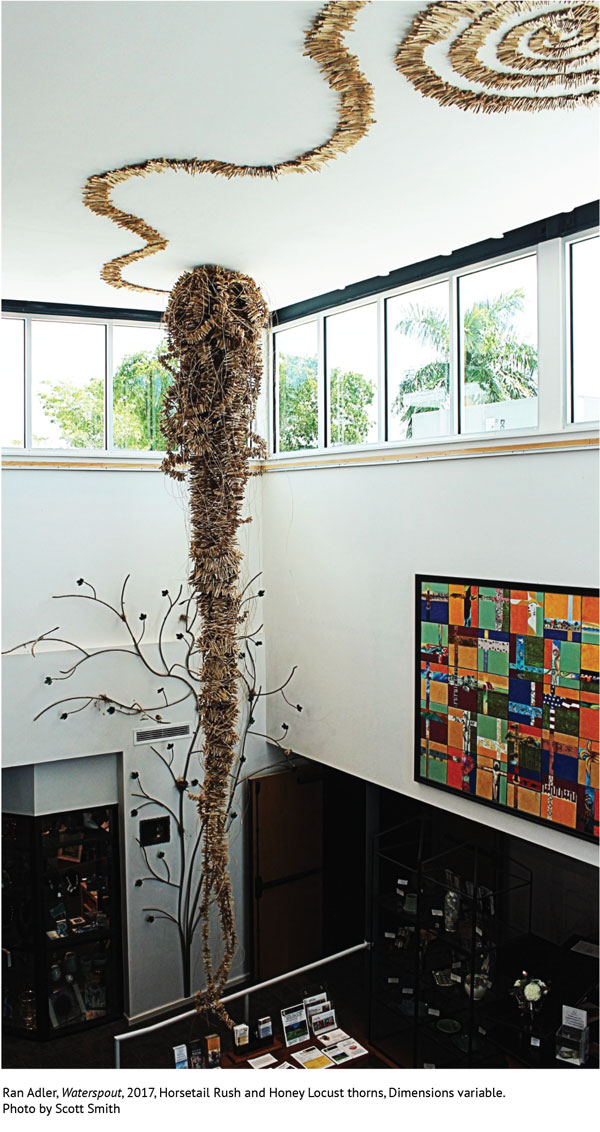
-
WHY PUBLIC ART? WHY YOU? WHY NOW? written by Tom Hall
Toggle More Info -
Focus on Marcela Pulgarin: Art Major has a hand in Naples Artist's ExhibitionbyLaurie D. Badcock
Toggle More Info

